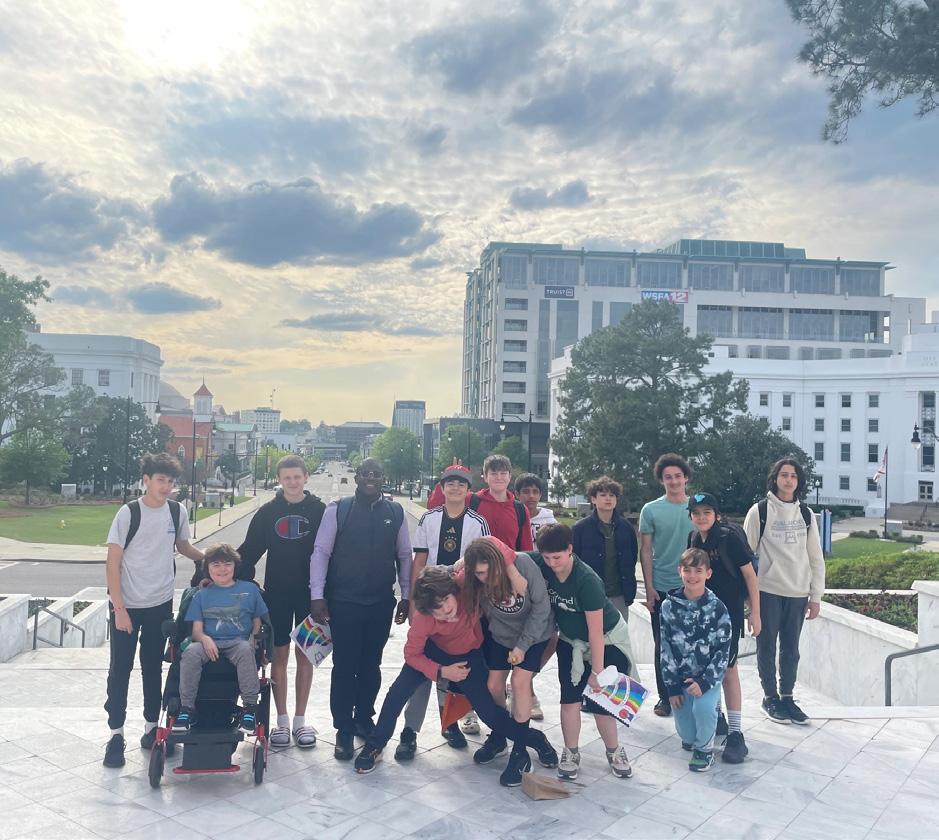
5 minute read
Civil Rights Journey
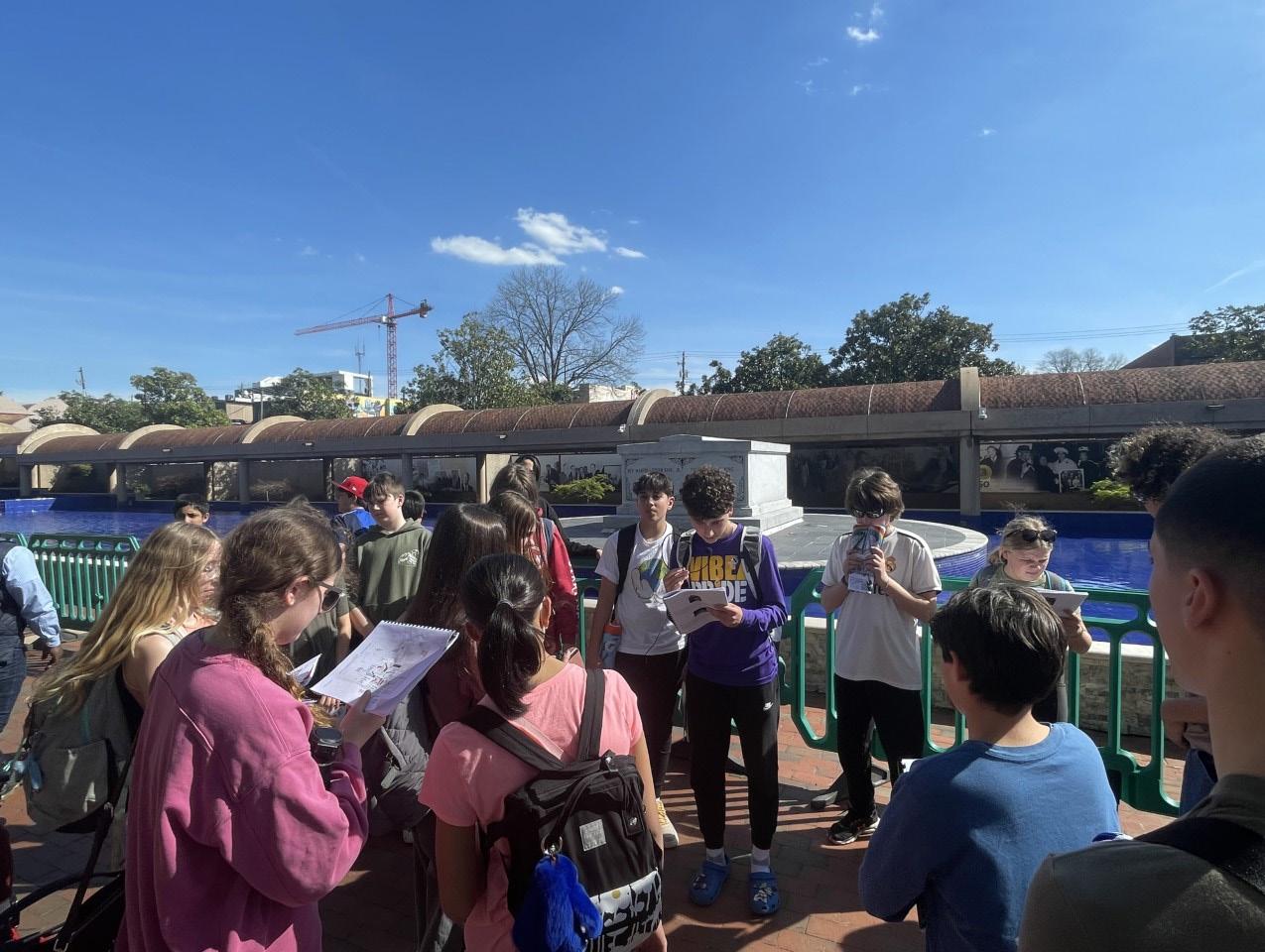
Days 1 - 3
Day 1: King Center in Atlanta | By Maia and Jocelyn

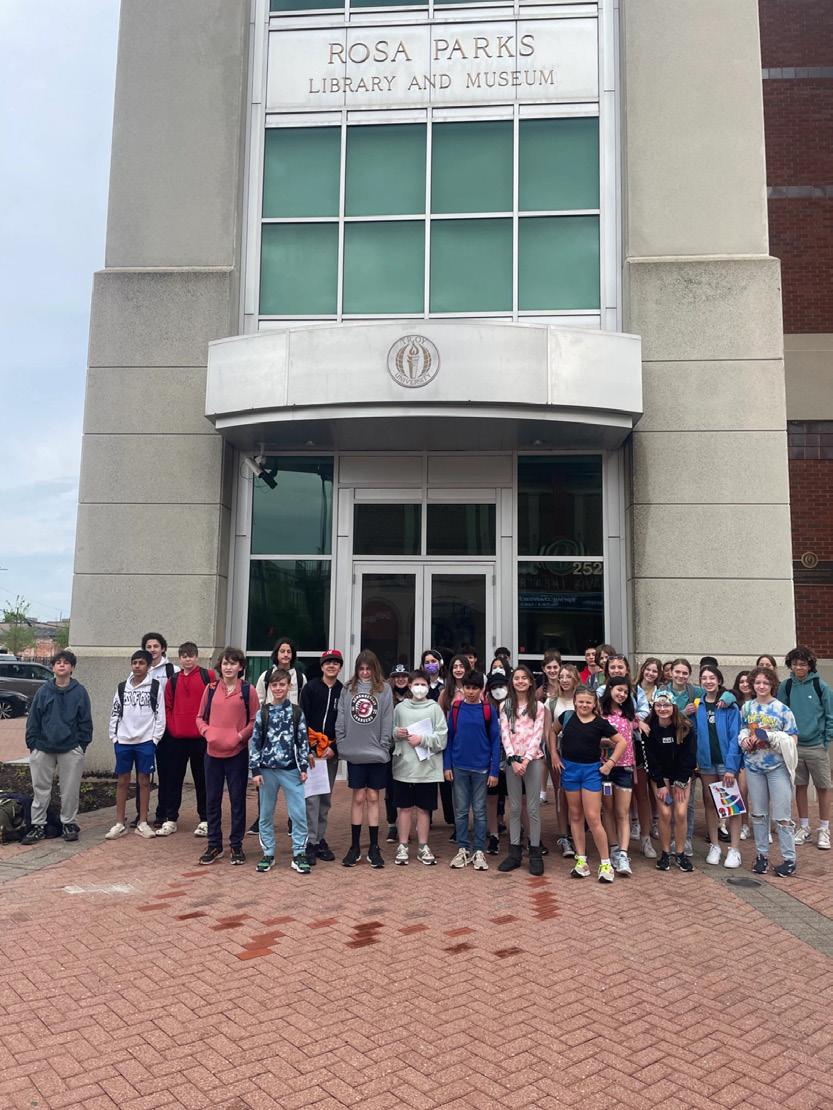
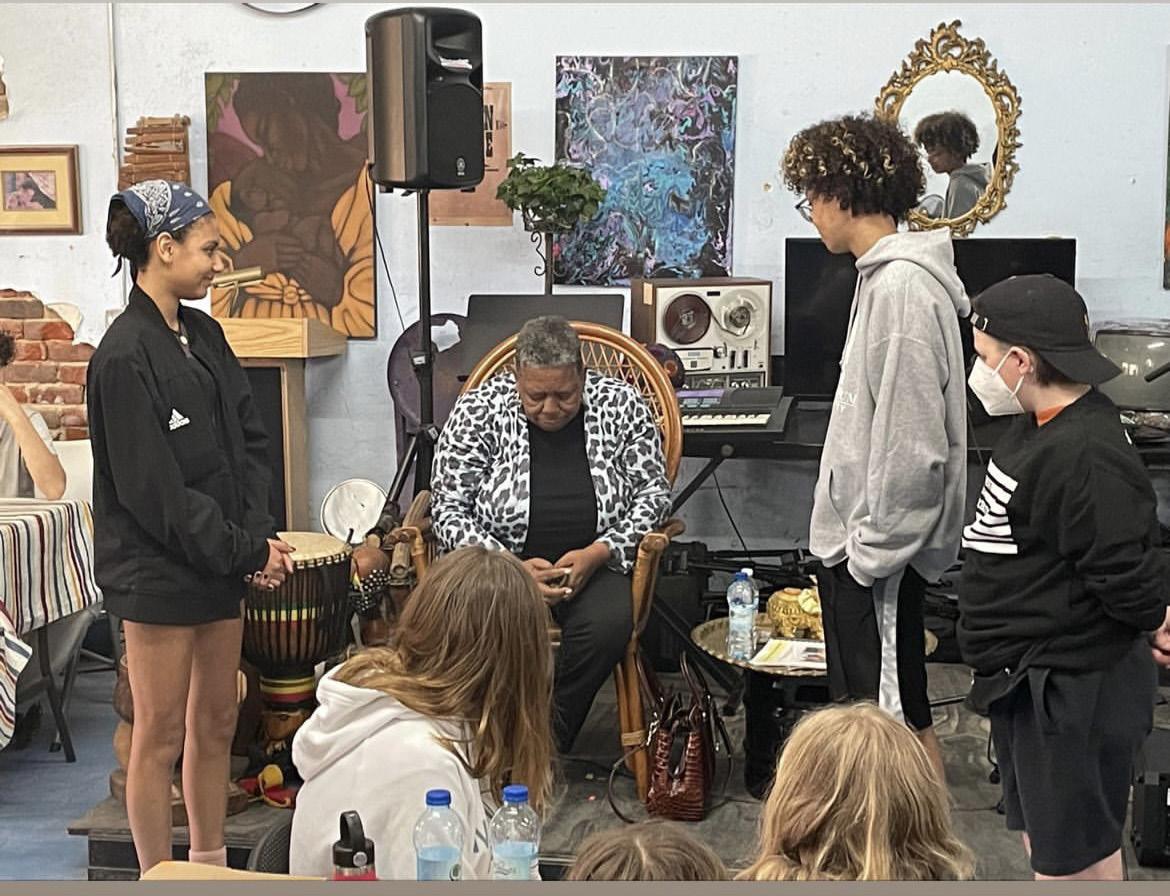
We started our civil rights journey today in Atlanta, Georgia after flying out from Albany airport to Baltimore, then going on a connecting flight. Once we landed, we boarded a bus and headed to the King Center. Here, we explored the various indoor exhibits, which taught us about Dr. King’s life, family, and beliefs. There was also a film playing inside about peaceful, non-violent protests. We then went outside and walked to the birth home of Dr. King. Unfortunately, we were unable to go inside his home, although we were able to walk through and look around the neighborhood which was restored to the way it was when he lived there. We then went to MLK’s memorial/tomb. We read a few paragraphs about the memorial and MLK’s life before having a moment of silence for Dr. King and his life at the memorial. After our time at the King Center, we had dinner at Virgil’s Gullah Kitchen and Bar. We ate a buffet style dinner with chicken, fried corn, fried tomatoes, and mac-n-cheese before heading to our hotel for the night. We swam, worked out, and played card games. Overall, it was a very fulfilling day and a great start to our civil rights journey.
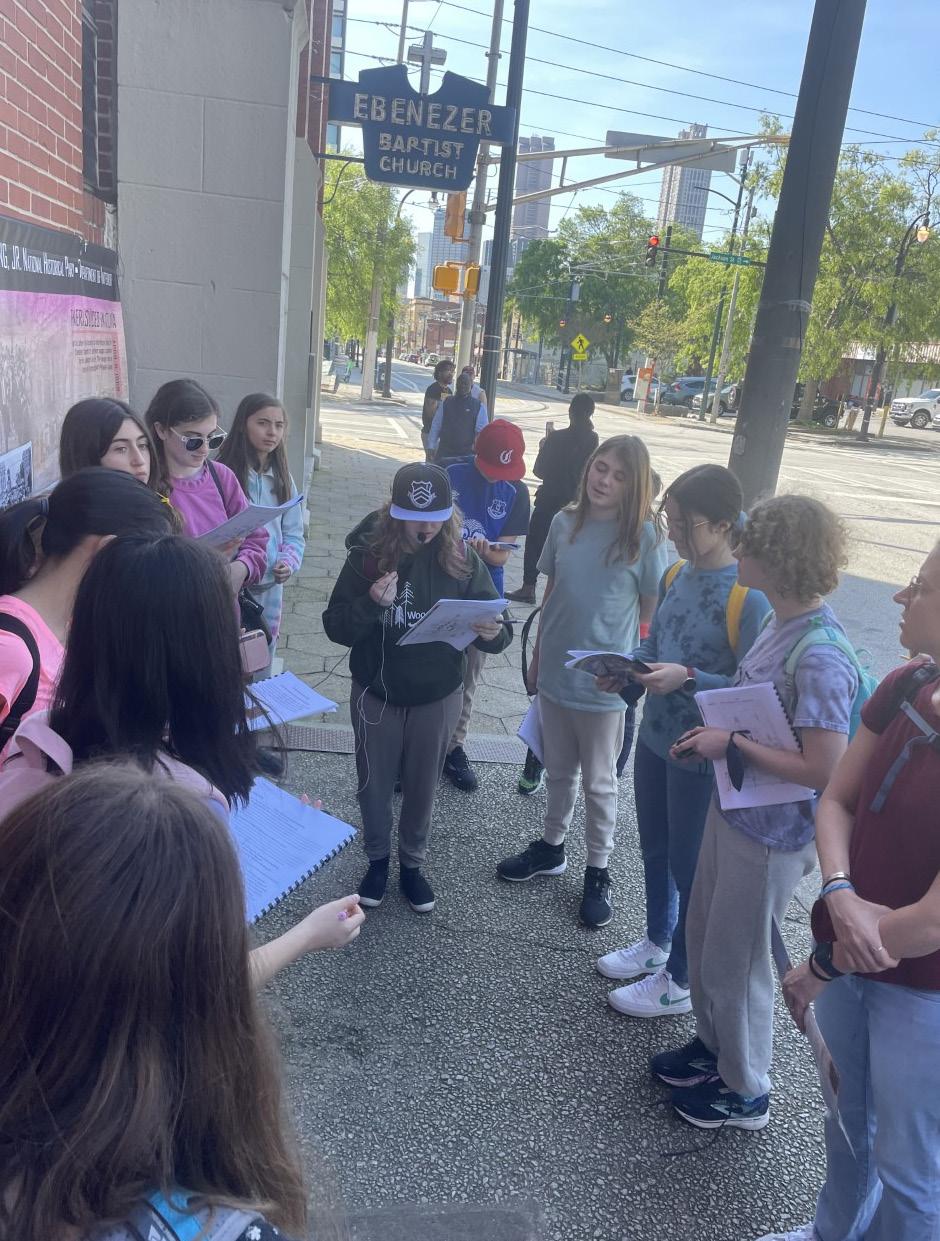
Day 2: Montgomery | By Eily and Izzy
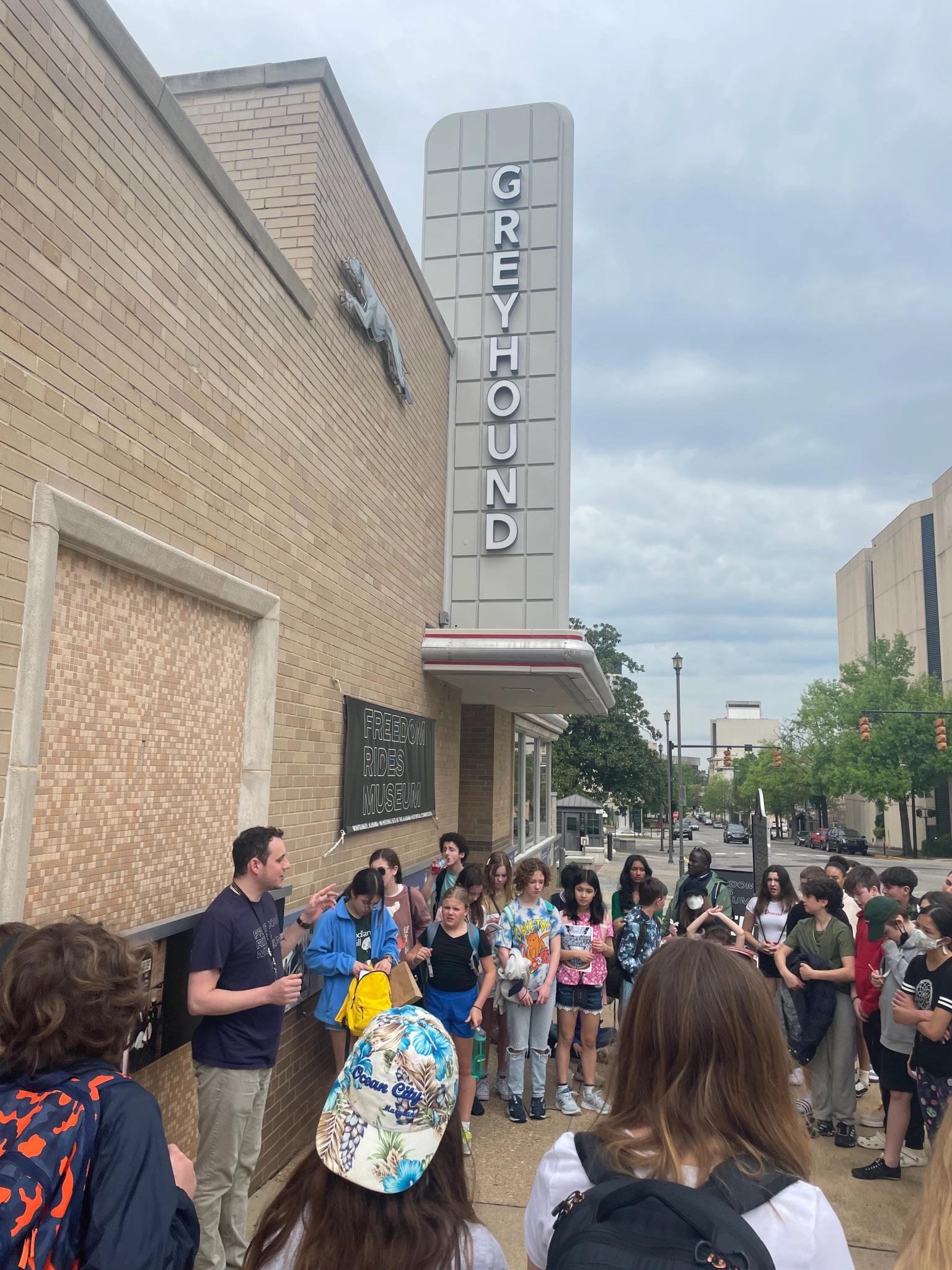
Today on our Civil Rights Journey, we found ourselves traveling from Atlanta, Georgia, to Montgomery, Alabama. First stop was the Rosa Parks Museum! This museum featured a fun busthemed blast to the past within an interactive time machine which was a bus we could all board. Then, we took a selfguided tour around the rest of the museum. Next, we traveled to the Freedom Rider’s Museum which was an unplanned addition to our itinerary! We learned a lot about the freedom riders movement, which pushed the boundaries of segregation and pushed to integrate buses going across state lines. The riders were attacked by the K.K.K., bombed, and harassed by the police.
Next stop, was the first Confederate White House. The house had very interesting architecture and history to go along with it. It was in use during the Civil War, housing Jefferson Davis for a brief time during the start of the Civil War. After that, we visited Dexter Ave. Baptist Church. Our tour guide, Wanda, had a very profound speech that spoke in some way to every one of us. In the church’s bottom level, there was both a beautiful mural and a podium that was actually used by Dr. Martin Luther King Jr. himself in his “How Long? Not Long” speech.
On the final historic destination of our day, we went to the Southern Poverty Law Center and the Civil Rights memorial. However, the Civil Rights memorial was closed down due to a crack in the table. However, the exhibit within the museum itself was incredibly impactful and meaningful, with videos touching on both the older civil rights struggles and the newer ones concerning BLM and relative movements.
Day 3: Equal Justice Initiative Museum and Memorial and Selma, Alabama
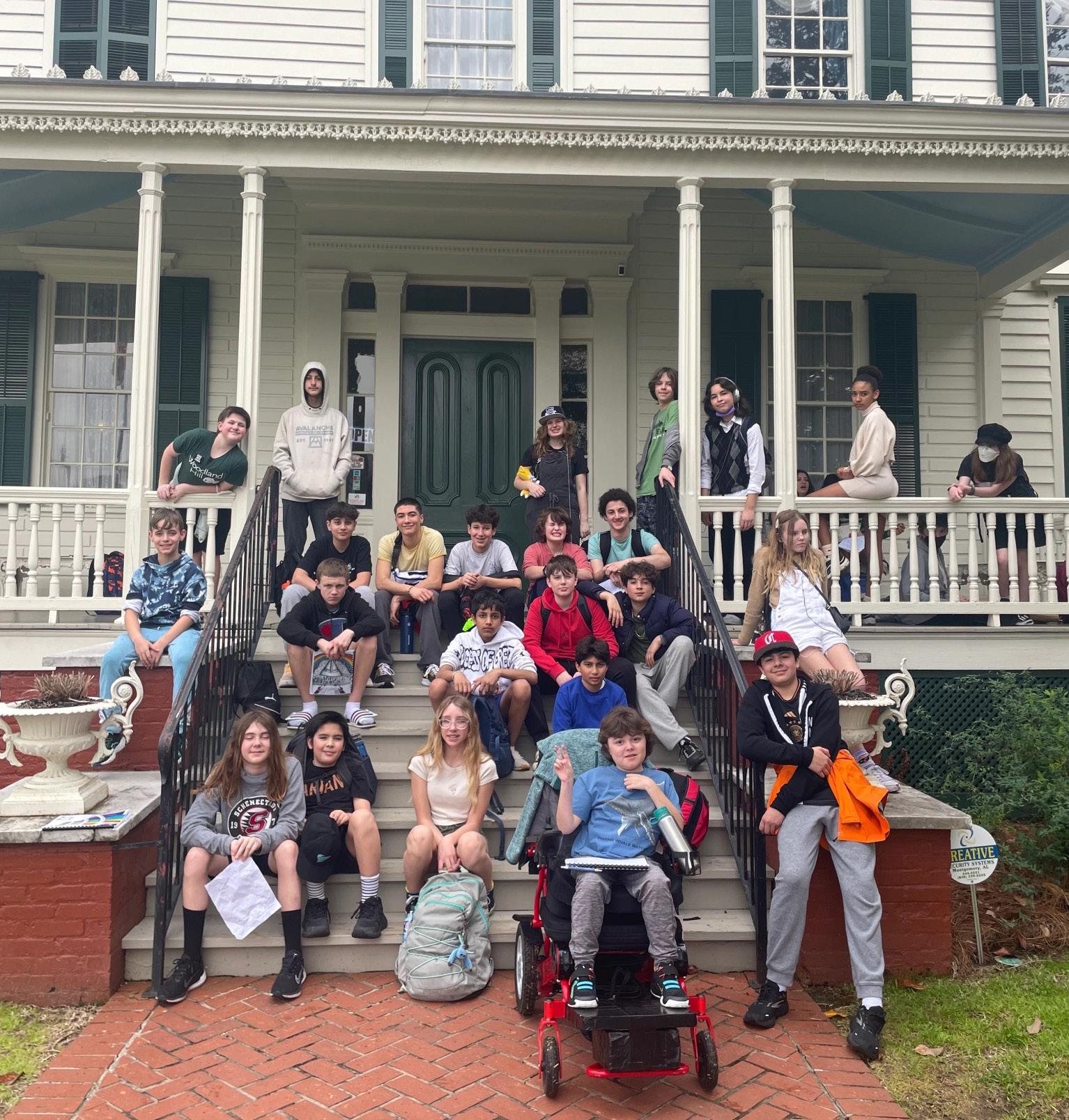
We went to Montgomery, and visited the lynching museum. The museum was created by Brian Stevenson the creator of the EJI (equal justice initiative). We explored the history of America and slavery. When you first enter there was a variety of sculptures of people wearing different forms of torture devices or chains submerged in the water. The museum allowed us to look more at the people that were lynched by collecting the dirt from those lynching sites and putting them on display allowing us to see the tragedies of lynching. There were also interactive educational videos and movies the museum created to make a more hands on learning experience for people visiting. Overall, it was a very powerful stop and made us really think and understand the horrors of lynching.
Our next stop was the Lynching Memorial. The Memorial was filled with at least 100 different stones. Each stone was filled with names of African Americans who were lynched in each county. What surprised us was that these weren’t even all of the names. Many African Americans have been lynched without recognition. So many have stories that still need to be told.
For lunch we had a box lunch while we visited Joanne Bland, a woman who walked in the Selma March. She spoke about what it was like for her during The Civil Rights Movement and everything white people could do that she couldn’t. However, she wasn’t stuck on the past and was more worried about the present and future. She told us that we were each an important piece and that we had to do something to change the lasting effects of slavery and segregation. This was a really powerful experience and I think everyone left feeling inspired to do something about the issue.
The events of “Bloody Sunday”. When in Selma we visited the Edmon Pettus bridge, where we walked over the bridge in silence to appreciate the history and take in the legacy. After having a nice walk across the bridge, we boarded the bus and headed down to the 205 restaurant located in Tuscaloosa, the food was delicious, flavorful, and seasoned, a bonus of 10 points. We had a long drive to the hotel and everyone was exhausted, so we all hit the hay some might say.

